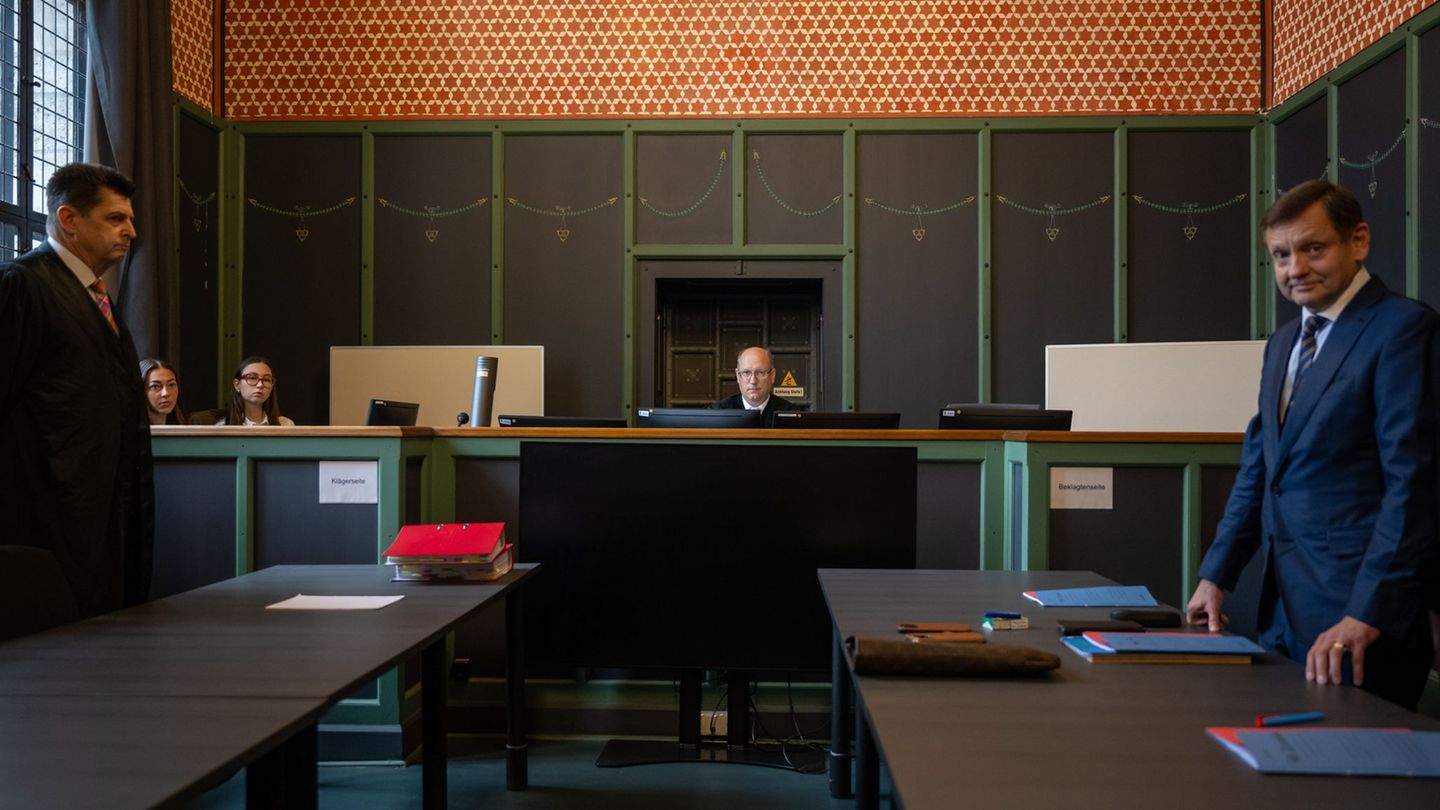Thus, on the New York Stock Exchange Argentine papers posted widespread increases, led by YPF (+6.4%), Banco Macro (+5.5%), Despegar (+5.3%); Bioceres (+5%); South Gas Carrier (+4.8%); and Telecom (+4.3%).
For its part, The leading stock index S&P Merval gained 2.4% to 123,953.36, after losing 1.2% last week and gaining a strong 38.5% in July.
The improvements were led by energy companies in anticipation of political changes in the area, after Massa took control of the Energy Secretariat, appointing Flavia Royón instead of Darío Martínez.
A) Yes, YPF gained 5.7%; Transportadora de Gas del Sur, 4.6%; and Transportadora de Gas del Norte, 4.4%. The advance of Banco Macro (+4.6%) was also highlighted.
In the general panel, the promotions of Gas Ban (+7.1%); Metrogas (+6.8%, also presented the quarterly balance), Richmond (+5.7%), and Camuzzi (+5.6%).
Massa promised to lower the fiscal deficit, strengthen the scarce reserves of the central bank (BCRA), reduce the rate of inflation and give a greater boost to trade. on the eve,
“Key clarifications on the implementation of the measures are awaited – so that they are part of a stabilization plan – since moving towards the correction of imbalances is urgent to improve expectations among economic agents”, said the economist Gustavo Ber. He added that “operators will also continue to pay attention to political signals, as having broad and sustainable support is crucial to moving forward given the associated costs.”
The advance of the emerging markets, before the fall of the dollar in the world, supported the rises in the Argentine papers. “Very strong improvement in the real that reflects demand for emerging securities, where bonds were very firm, something that was also noted in the performance of domestic assets”, pointed out from Aurum Valores.
This Monday “temporary advances” were due for 10,000 million pesos and the Government decided not to renew them before the BCRA, said an official spokesman, such Massa’s commitment to the announcements at his inauguration.
The fact that continues to worry the market is the constant sales of the Central Bank in the MULC. This Monday, he had to sell US$84 million and more than US$1,100 million have already gone to him for his interventions since last July 27.
In the month, it accumulates a negative balance of US$775 million so far this month, a balance similar to that of the beginning of July (-US$765 million), one of the months with the worst performance. “The stock of net reserves remains under pressure. The BCRA continues to run behind the curve with a devaluation rate above the cost of money, which encourages the delay in settlements”evaluated in the market.
Market sources do not rule out that the monetary authority decide this week a new increase in its reference interest rate, in line with the firm inflation of July that will be reported next Thursday.
In the US, on the other hand, while the balances for the second quarter continue to arrive, the S&P500 was unable to sustain the initial rally (opening 1% higher) and ended down 0.1%.
With the market waiting for the July inflation figure to be released this Wednesday, the 10-year bond rate fell 7 points to 2.76%.
Oil prices ended higher, after data on demand. In New York, a barrel of US West Texas Intermediate (WTI) for September delivery rose 2% to $90.76.
A barrel of North Sea Brent for October delivery gained 1.8% quoted at $96.65. “The slight recovery in crude oil came on the back of better data from China. The Asian giant imported 8.79 million barrels per day of crude oil in July, increasing from the four-year lows recorded in June. However, they are still 9 .5% below the levels registered in the same month last year”described from PPI.
Bonds and country risk
In fixed income, the main sovereign bonds in dollars ended with the majority of increases, after finishing stable last week and improving by 7.2% the previous one, due to expectations of changes in the economic portfolio.
The increases were led by Bonar 2029 and Bonar 2038 (+2.7%), which were followed by Bonar 2030 (+2.4%), and Bonar 2035 (+2.3%). Globals, meanwhile, ended mixed, with Global 2030 (+1.7%) at the top of the gains.
“We believe that the changes in energy announced over the weekend imply a slight positive signal for the necessary fiscal adjustment”commented on the market.
Thus, the country risk prepared by the bank JP. Morgan fell 2.7% to 2,371 basis points, in line with the improvement in public securities and what was evidenced on Wall Street.
For their part, sovereign dollar-linked bonds fell an average of 1% along the curve, with good volume in the short section. Meanwhile, the CER-adjusted debt traded mixed, offered by the Leceres, which fell 0.1%, and somewhat more borrowers, the Bonceres, which gained 0.3%.
On Tuesday, the Ministry of Economy will carry out an exchange of bonds in pesos for dual bonds that will be adjusted by the variation that is greater in the CER index (+2% in the case of dual bonds as of June and July 2023 and +2.25 % in the case of the dual bond to September 2023) and the wholesale exchange rate variation (com A 3500).
The titles involved are Leceres X16G2 and X21O2, the Lepase SG162, the Ledes S31G2, S30S2 and S31O2, and the Boncer T2X2. The placement prices of the new bonds will be determined in the auction.
Operators agree that it will be Massa’s first big test, with the key being genuine demand from the private sector, since many assets are in the portfolios of public bodies.
Source: Ambito
David William is a talented author who has made a name for himself in the world of writing. He is a professional author who writes on a wide range of topics, from general interest to opinion news. David is currently working as a writer at 24 hours worlds where he brings his unique perspective and in-depth research to his articles, making them both informative and engaging.




